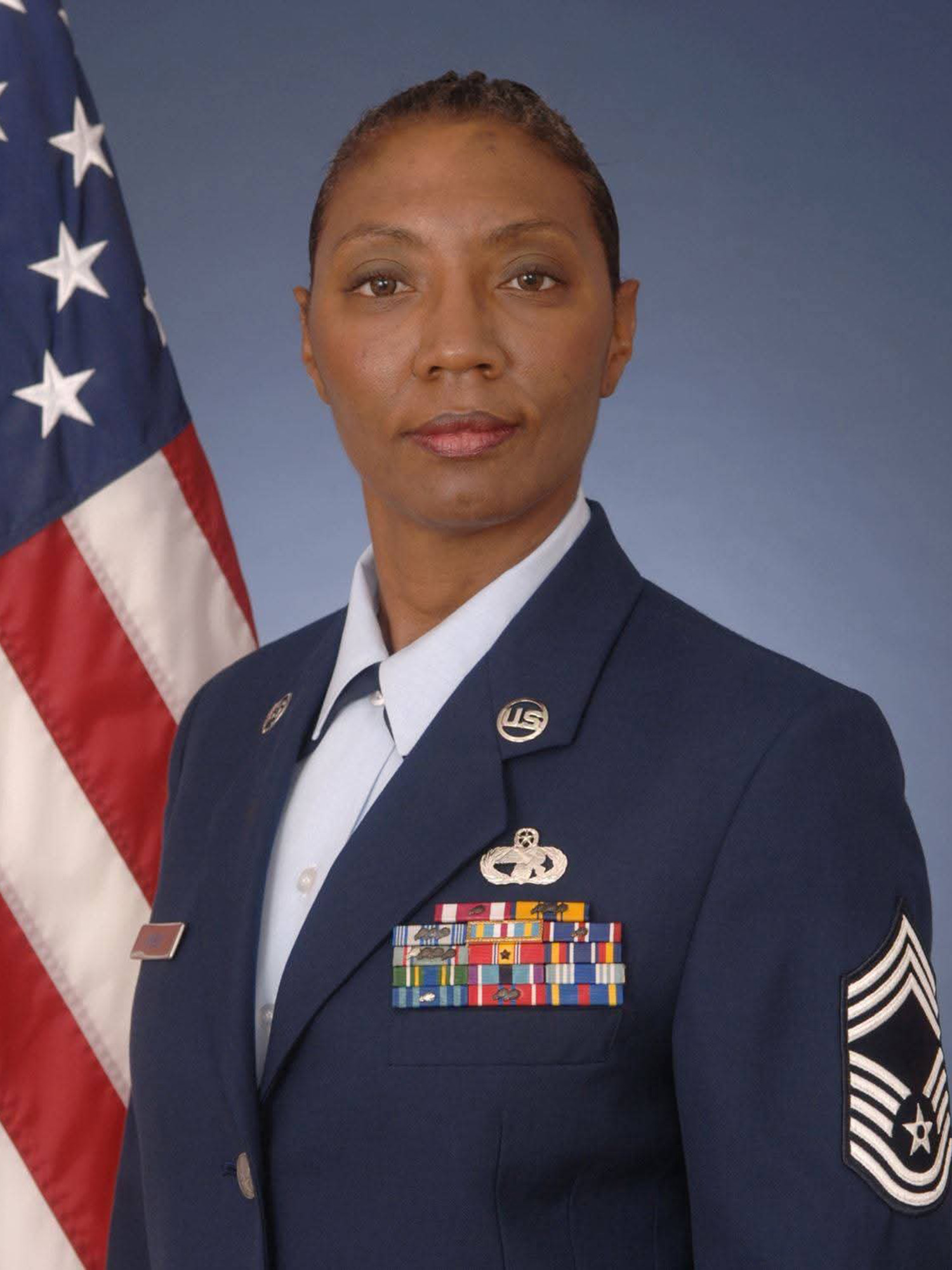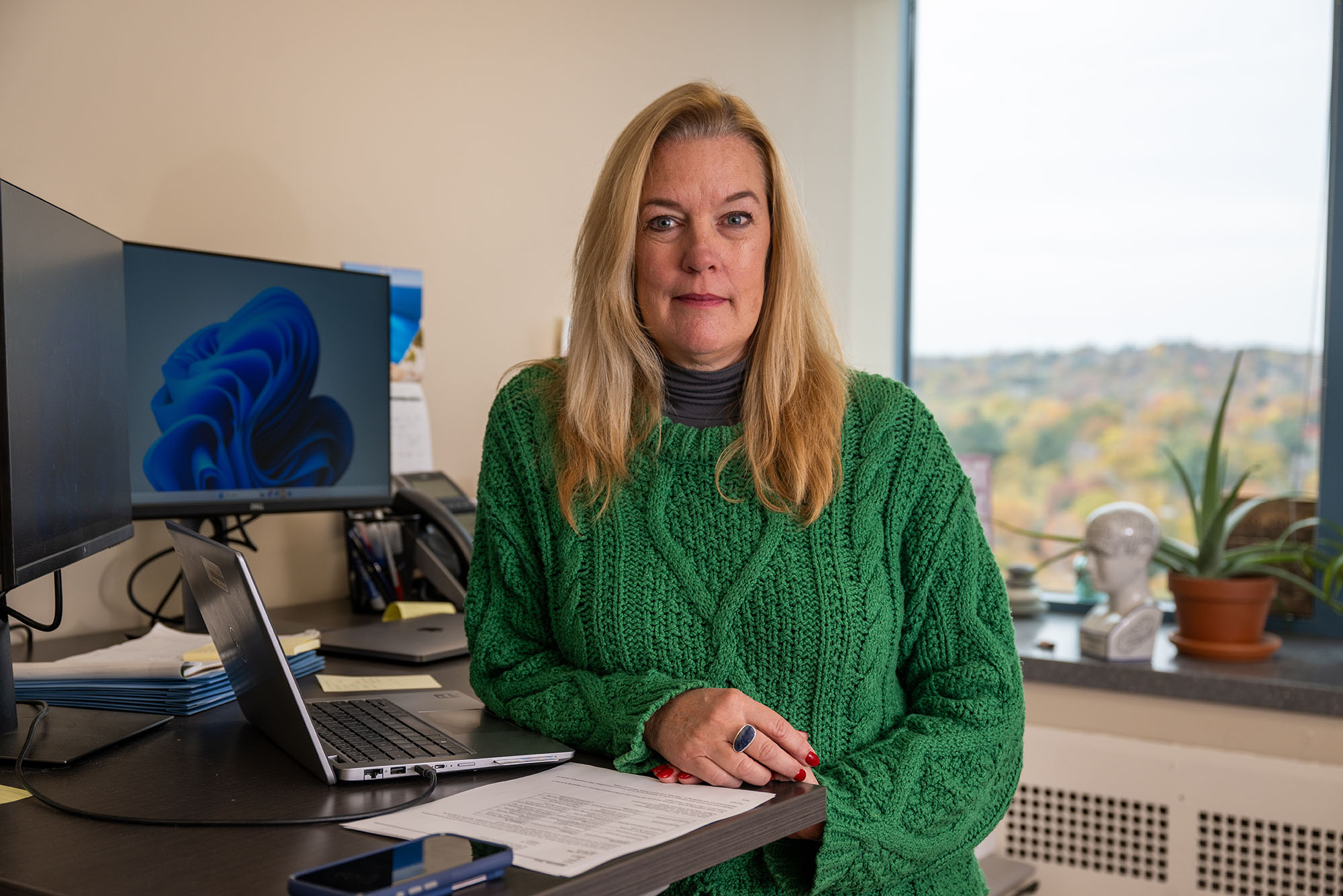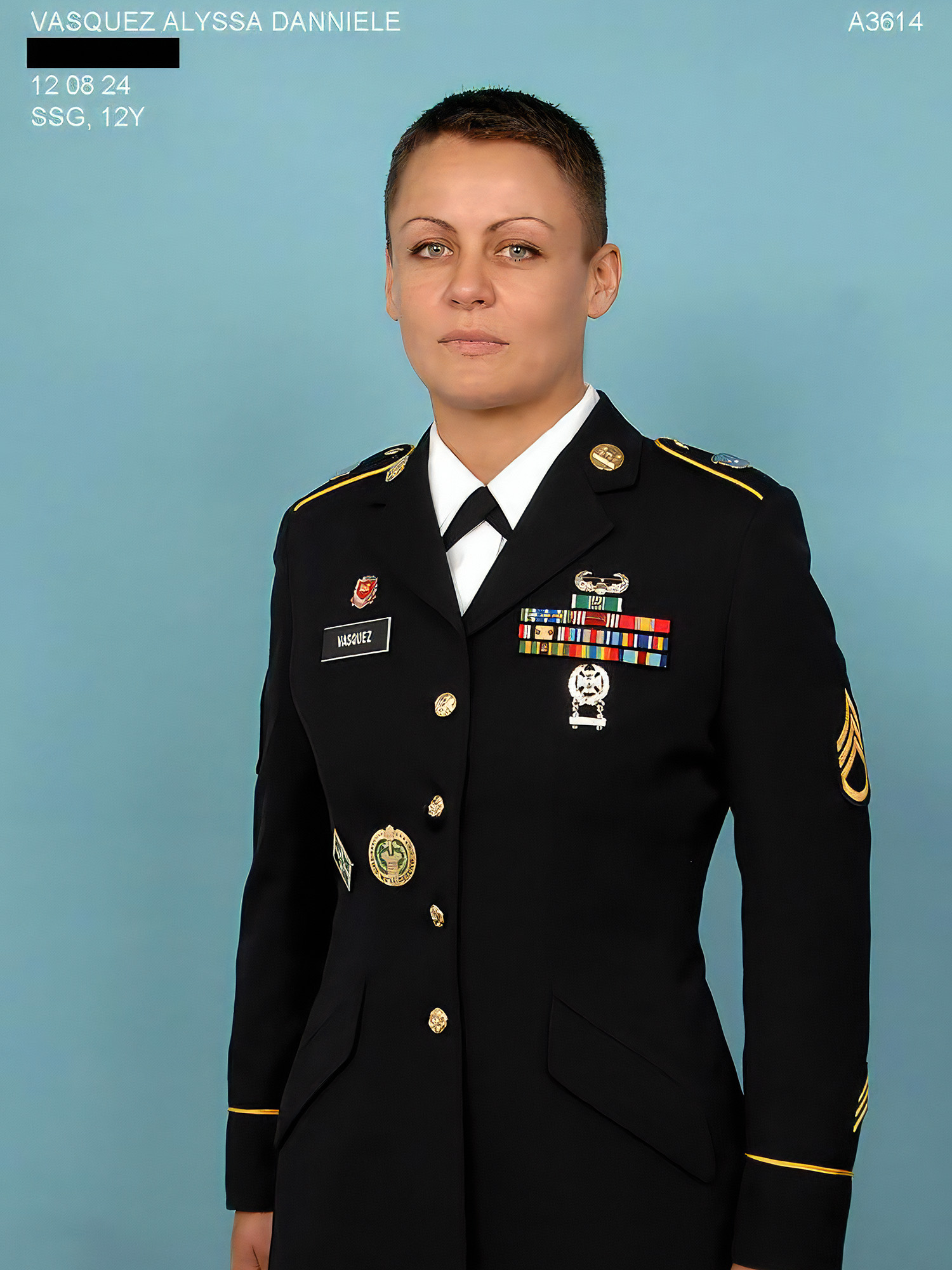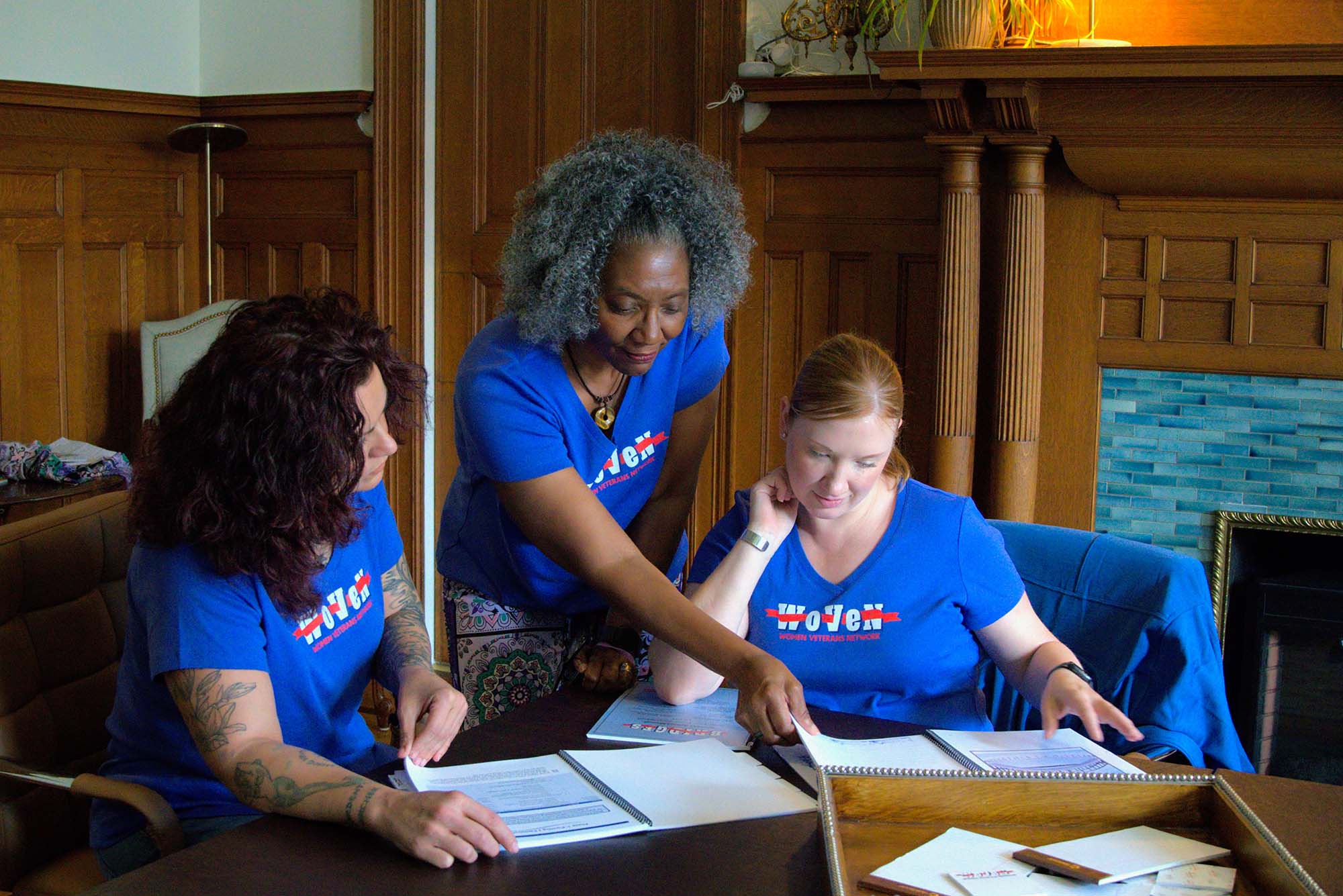BU Researcher Helps Women Veterans Find Their Place After Serving Their Country
Tara Galovski started the Women Veterans Network (WoVeN) in 2017 with six participants. Now, 6,500 women have joined from all 50 states and Puerto Rico.

WoVeN is a unique social network of women veterans created by a BU psychiatry professor, meant to foster connections and build relationships. Photo courtesy of Tara Galovski
BU Researcher Helps Women Veterans Find Their Place After Serving Their Country
Tara Galovski started the Women Veterans Network (WoVeN) in 2017 with six participants. Now, 6,500 women have joined from all 50 states and Puerto Rico.
When Brenda Massey retired from the Air Force, she felt suddenly adrift. Massey, who signed up right out of high school and retired as a chief master sergeant, had spent 30 years in a highly structured environment—one that gave her little time to process the sorts of high-stress experiences that come with the territory.

“I got out of the military, and I didn’t realize I had suffered any kind of trauma,” Massey says. “But the military was all I knew, and I felt like I’d been separated from my family. I lost a sense of belonging.”
Massey isn’t an outlier in her experience—a fact Boston University researcher Tara Galovski has discovered through her work in trauma recovery.
Veterans are exposed to trauma during service, and their transition to civilian life can be challenging and difficult. This is particularly true for women, who are a minority in both the active military and the veteran populations. In her work with civilians, veterans, and law enforcement, Galovski, a professor of psychiatry in the BU Chobanian & Avedisian School of Medicine, has investigated the impact of gender differences, duration of trauma, type of trauma, and the presence of comorbid psychiatric disorders on the development and maintenance of post-traumatic stress disorder, or PTSD, as well as the recovery from PTSD. Galovski focuses her work on the journey of women veterans and their high risk for negative mental health outcomes.
In 2017, Galovski and her colleagues at Veterans Affairs created the Women Veterans Network, or WoVeN, a unique social network of women veterans meant to foster connections and build relationships in local communities and across the nation. Since its founding, it has helped thousands of women veterans find a meaningful community and improve their well-being.

According to the VA, women made up just over 11 percent of the veteran population in the country in 2023, the most recent year for which data were available. By 2043, the VA projects that proportion will grow to roughly 17 percent—still less than a quarter of living veterans in the US.
“Women are a minority within the military, and women veterans are certainly a minority within the larger population. And, so, when women veterans separate from service, their risk for isolation and loneliness is actually quite profound,” says Galovski, who is also director of the Women’s Health Sciences Division of the National Center for PTSD at the VA Boston Healthcare System. “Many do very well, and many thrive, but there’s no question that we’ve found that women veterans’ mental health declines over time—to a greater extent than men—after leaving military service.”
Creating True Connection
WoVeN is built around an eight-week protocol that Galovski wrote. Each week features a research-informed theme, such as “connection” or “balance,” that was designed—with input from her Women’s Health Sciences Division colleagues—to address risk factors specific to women veterans.
For their first eight meetings, the women in WoVeN participate in a brief exercise focused on one of these themes and then engage in guided discussion to share their experiences. Each group is led by a trained peer leader, someone who is also a woman veteran. And even though the prompts are standardized, the protocol isn’t didactic, Galovski says. It’s meant to flow, to create true connection among the women in the group.

For Alyssa Vasquez, who was honorably discharged from the Army after 13 years of active duty service, that connection has been profound. Like Massey, she experienced challenges upon leaving the service.
“I just felt very ill-adjusted to civilian life,” says Vasquez, who concluded her service at the rank of staff sergeant and spent the last three years of her service at the US Army’s survival school. “I didn’t have anyone to talk to. I had nowhere to go. I had built a life moving from duffel bag to duffel bag, and suddenly I had to set roots at home. I felt so disconnected.”
Some women even disconnect from their own honorable service: They are more likely to distance themselves from their veteran identities than their male counterparts, Galovski says, because, in part, their service is more often disregarded. Compared to male veterans, women are less likely to be recognized as having served their country and are generally at a higher risk for having experienced different types of trauma, such as military sexual trauma, during their service, she says.
All of this makes women veterans especially vulnerable to isolation after their service. It can be hard to connect with civilians who didn’t share their intense military experience. At the same time, it could be difficult to even find—never mind connect with—fellow women veterans. That’s something WoVeN aims to change.
“For some women veterans, I think that it just becomes less distressing in some ways to back away from their veteran identity. But in doing so, you’re denying part of yourself and discounting your service,” Galovski says.
WoVeN: The Ties That Bind
Galovski and her colleagues started WoVeN with six women from three different states. Now, less than a decade later, its ranks have grown to include more than 6,500 women representing all 50 states and Puerto Rico, plus a wait-list that can swell to close to 1,000 women.

“It is not uncommon to hear, ‘WoVeN saved my life,’” Galovski says, “That is incredibly powerful.”
Indeed, some of Galovski’s most recent research bears this out. In a study of 393 members of WoVeN conducted over the course of several months, she and her colleagues “observed improvements in PTSD symptoms over time,” according to the 2024 paper. The researchers found additional benefits—significant improvements in PTSD and depression symptoms, sense of belonging, and quality of life—among those with “clinical levels of mental health symptoms.”
“You’ll Never Feel Completely Alone Again”
Massey and Vasquez, both active members of WoVeN, say the experience has been life-changing.
“Every time a question was asked in a meeting, you could close your eyes, listen to the other women’s answers, and feel like you were answering it yourself,” Massey says. “I tell people all the time, WoVeN is therapy without a therapist. We can share, and we can help each other. We don’t have to feel alone.”

Massey joined WoVeN in its early days, in 2017, and has since advanced to be a peer leader and a trainer for others. She estimates that in the years she’s been in the group, she’s interacted with several thousand new members. “I joined WoVeN thinking I would help others, but WoVeN helped me every single time,” she says.
Vasquez, also a WoVeN peer leader and trainer, says the program “opened up a whole new world for me.”
“There’s something special about those WoVeN rooms. When you walk in, it’s almost like you’re disarmed. It’s this place of trust. It doesn’t matter if you’re walking in with 33 years of experience, or two—you’re there to tell your story, with no judgments, and that’s a rare thing. The way the modules are set up, you have this constant unfolding of your story and getting a chance to really reflect on things you’ve been through. After you’re connected with WoVeN, you’ll never feel completely alone again, because there’s always your sisters pulling you back from that darkness.”
Galovski’s research is primarily funded by the National Institutes of Health and the National Science Foundation. The Bob Woodruff Foundation is a major funder of WoVeN, and other funding comes from the Oak Foundation and the May & Stanley Smith Charitable Trust. The Walmart Foundation was the original funder.
